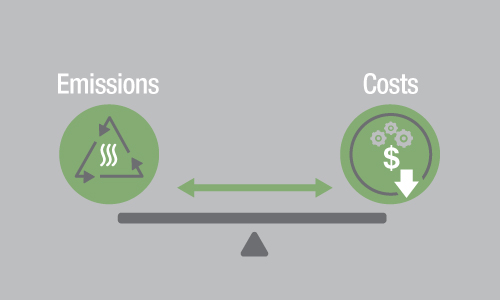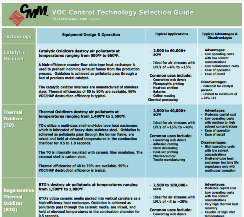As any plant manager will tell you, keeping operating costs low is one of the most important aspects of any operation. At the same time, depending on the industry you’re in, you may also have to abide by gas emission regulations set by the EPA.
While meeting both of these is extremely important, some managers try to find individual solutions to these issues. However, there are VOC abatement systems that can help meet gas emission standards and reduce your operating costs at the same time. Despite the fact that this will depend partially on the system you already have in place (if any), regenerative thermal oxidizers offer a great solution to controlling air pollution and keeping costs low at the same time.
Introducing Regenerative Thermal Oxidizers
Also referred to as RTOs, these dedicated pieces of machinery are designed to destroy volatile organic compounds (VOCs). The reason these systems are extremely energy efficient is that they use a method of heat recovery that is 15% more effective than a traditional heat exchanger. In other words, they are capable of very high thermal recovery, which translates to improved energy efficiency and reduced costs.
How RTOs Can Help Your Manufacturing Facility
RTOs have an array of benefits, but their VOC destruction rates and energy efficiency are arguably the two most important ones.
Effective VOC Abatement
Regenerative thermal oxidizers promote a chemical reaction at high temperatures typically ranging from 815°C (1,500 F) to 980°C (1,800 F) in order to destroy the air pollutants. By using ceramic media to promote heat and energy transfer, high-temperature thermal oxidation occurs as the polluted air is moved through heat-exchanging media, held in the combustion chamber, and finally released into the atmosphere.
Lower Operating Costs
RTOs are capable of extremely high VOC destruction rates, but they also excel when it comes to energy efficiency. By using a series of energy recovery and heat exchanging canisters, regenerative thermal oxidizers can help achieve energy efficiency rates that range from 85% to 97% in the best cases. Although the machine’s design will heavily influence its energy efficiency, there are also other steps you can take to make improve your overall oxidizer system efficiency.
- Gather Processing and Performance Data: You should have a trained, knowledgeable individual at your disposal to help you collect your current oxidizer processing and performance data. The vast majority of factories already use some type of air pollution control mechanism, so it’s important to assess its performance to find the ideal fit for your factory.
- Enhance Energy Recovery: Despite the fact that RTOs have a number of thermal recovery canisters, the oxidizer ultimately releases the treated exhaust and waste heat to the atmosphere. By incorporating various types of heat exchangers this waste heat can be recovered and used in other processes or building heat in your plant.
- Look for Government Incentives: Having government-established regulations may actually be beneficial as these are usually accompanied by rebates and incentives. Make sure you check your state’s legislation and verify if you qualify for any rebates or special incentives.
In Conclusion
Depending on the type of factory you operate, regenerative thermal oxidizers can provide a great solution to help reduce costs and destroy air pollutants.
If you are interested in learning more about RTOs, get in touch with us by giving us a call or filling out our online contact form today!






